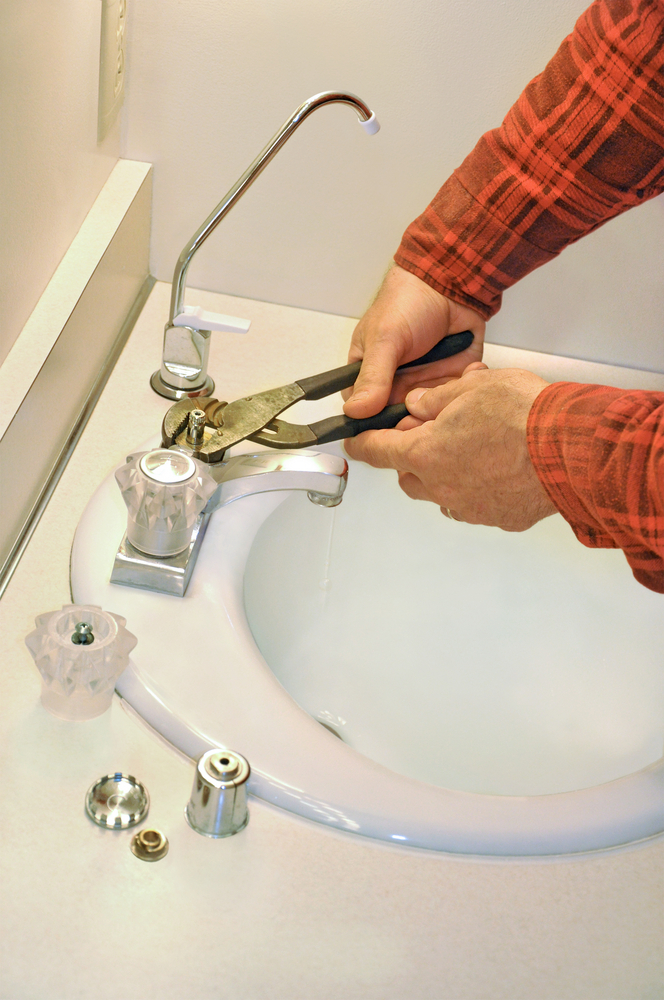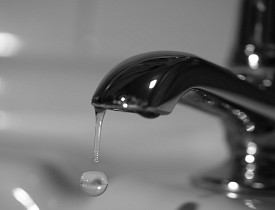The Advantages of Correcting a Dripping Faucet
The Advantages of Correcting a Dripping Faucet
Blog Article
Listed here further down you will find additional decent insight in relation to Why Is It Important To Fix Your Leaking Tap/Faucet?.

Leaking taps may look like a small aggravation, however their influence exceeds simply the inconvenience of the audio. From drainage to incurring unneeded economic costs and wellness threats, disregarding a dripping faucet can cause various consequences. In this write-up, we'll delve into why it's vital to resolve this typical house problem immediately and successfully.
Wastage of Water
Environmental Effect
Dripping taps add considerably to water waste. According to the Epa (EPA), a solitary faucet leaking at one drip per secondly can waste more than 3,000 gallons of water per year. This not only pressures water sources however also affects communities and wildlife dependent on them.
Financial Prices
Increased Water Costs
Beyond the environmental effect, trickling faucets can blow up water expenses substantially. The gathered wastage over time translates right into greater utility costs, which can have been avoided with timely repairs.
Possible Property Damages
Additionally, long term leaking can bring about damage to fixtures and surfaces bordering the faucet. Water build-up can trigger discoloration, corrosion, and even architectural problems if left neglected, resulting in added repair service prices.
Health and wellness Problems
Mold and Mold Growth
The continuous existence of dampness from a leaking faucet creates a perfect environment for mold and mildew and mold growth. These fungi not only jeopardize indoor air high quality but additionally pose wellness threats, specifically for individuals with breathing conditions or allergies.
Waterborne Conditions
Stagnant water in leaking taps can end up being a breeding place for microorganisms and various other virus, boosting the risk of waterborne diseases. Contaminants such as Legionella microorganisms flourish in stagnant water, potentially causing major diseases when consumed or inhaled.
DIY vs. Specialist Fixing
Benefits and drawbacks of DIY Fixing
While some may try to fix a leaking tap themselves, do it yourself repair work include their own set of obstacles. Without proper understanding and tools, do it yourself efforts can intensify the issue or lead to incomplete repairs, lengthening the problem.
Benefits of Hiring a Professional Plumber
Employing a professional plumber guarantees that the underlying cause of the leaking tap is resolved effectively. Plumbing technicians possess the proficiency and tools to detect and repair tap problems effectively, conserving time and lessening the risk of further damages.
Step-by-Step Overview to Dealing With a Dripping Tap
Devices Required
Prior to trying to fix a dripping tap, gather the needed devices, including a flexible wrench, screwdrivers, replacement parts (such as washing machines or cartridges), and plumber's tape.
Common Faucet Issues and Their Solutions
Identify the sort of tap and the details issue causing the drip. Common issues consist of worn-out washing machines, corroded valve seats, or malfunctioning O-rings. Describe supplier instructions or online tutorials for detailed support on fixings.
Preventive Measures
Routine Upkeep Tips
To stop dripping faucets, perform regular upkeep such as cleansing aerators, inspecting for leakages, and changing worn-out parts immediately. Additionally, consider mounting water-saving gadgets or upgrading to a lot more effective fixtures.
Significance of Prompt Services
Attending to leaking taps as soon as they're observed avoids additional water waste and possible damage, ultimately conserving both water and money over time.
Influence On Residential Property Value
Assumption of Well-Maintained Property
Preserving a residential property in good condition, including attending to maintenance problems like leaking taps, improves its regarded value and value amongst potential buyers or tenants.
Impact on Resale Value
Properties with well-kept plumbing components, consisting of taps, command greater resale values in the realty market. Dealing with leaking faucets can contribute to a favorable impact during home examinations and arrangements.
Environmental Responsibility
Private Contribution to Conservation
Taking obligation for taking care of dripping faucets straightens with broader initiatives toward water preservation and environmental sustainability. Every person's actions jointly make a substantial influence on maintaining precious resources.
Sustainable Living Practices
By focusing on punctual repairs and embracing water-saving behaviors, people add to lasting living methods that benefit both existing and future generations.
Final thought
Attending to a dripping faucet surpasses mere benefit; it's a vital step toward conserving water, decreasing economic expenses, and safeguarding health and wellness and residential or commercial property. Whether via do it yourself repair services or expert assistance, taking action to deal with dripping taps is a small yet impactful method to advertise liable stewardship of sources and contribute to a much healthier, more sustainable future.
How to Fix a Dripping or Leaky Faucet
A leaking faucet is one of the most common problems that homeowners encounter, but it being commonplace doesn’t make it any less annoying. The constant drip drip drip of a leaking bathtub faucet, showerhead, or sink tap can disturb your home’s serenity. Left neglected, a dripping faucet can also result in higher water bills and discoloration or mold growth in your sink or plumbing fixtures.
Fortunately, you don’t have to be a trained plumber to know how to stop a dripping faucet. With some basic tools, replacement parts, and a little patience, leaky faucet repair is a breeze. In this article, we’ll explain what causes dripping faucets and how you can fix them.
What Causes a Leaking Faucet?
Kitchen and bathroom faucets come in all manner of designs, but most involve some combination of valves, O-rings, seals, and washers. The O-ring is usually the weakest link, but any one of these pieces can wear down over time. Heat, moisture, temperature fluctuations, minerals, mold, and movement can contribute to warping and corrosion, breaking the watertight seal. This just comes with the territory of being a homeowner. Everything is always subject to wear and tear, and some component parts of your appliances and fixtures need to be replaced on occasion. At least replacement O-rings are cheap!
More rarely, dripping faucets can be a symptom of excessively high water pressure. Were this the case in your home, you would probably notice that the leak is not isolated to one faucet. Water pressure issues are harder to resolve on your own. We recommend contacting a professional plumber if you suspect your water pressure is too high.
How to Fix a Dripping Faucet
Pipe wrench or monkey wrench Allen wrench set Screwdrivers Old towel or rag Shut off the water.
Before you do anything, you need to turn off the water to keep from drenching your kitchen or bathroom. You should find a valve under the sink and against the wall. Once you’ve turned this valve, try turning the faucet on to confirm that the water source has been cut off.
If you can’t locate your local valve for the faucet you’re working on, you can always shut off the water to the house at the main valve. Of course, this will prohibit anyone from using the sinks, showers, or toilets while you’re working on the faucet that’s giving you trouble.
Plug or block the drain.
You’ll be disassembling the faucet and removing some small bits of hardware. Plug the drain with a stopper or rag to avoid the possibility of a small screw falling into your P-trap.
Take apart the faucet assembly.
There are several varieties of kitchen and bathroom faucets, each with its own manner of assembly. For detailed instructions on how to disassemble your faucet, you can refer to the fixture’s manual or contact the manufacturer. If you know whether you have a ball, disc, cartridge, or compression faucet, you can find detailed schematics online.
In general, you need to begin by removing the faucet handles. You might notice a small screw that you’ll need to remove with a screwdriver or Allen wrench. If you don’t see any visible securing hardware, it’s likely hidden under a decorative cap that can be unscrewed or popped off with flathead screwdriver.
Remove each piece methodically, consulting a schematic when necessary. Take notes or arrange the pieces in such a way to make it easier to correctly reassemble the faucet later.
Remove the cartridge.
Once you’ve removed the handles and securing hardware, you should be able to remove the valve cartridge or stem. Some cartridges will slide right out. Other faucet models will require you to loosen a nut with a pipe wrench before you can remove the valve stem.
Examine the exposed hardware.
With the cartridge or stem removed, inspect the component parts. Check the rubber O-rings for wear and tear. Also examine the seat washer for corrosion or other damage. These pieces are usually the responsible parties for a dripping faucet, but it’s worth inspecting the other component parts while you have the faucet disassembled.
Find replacement parts.
Once you’ve identified which faucet component has failed, find an identical replacement. Your local hardware store should have O-rings, seat washers, and other standard components in stock. If you have a luxury or uncommon faucet, you may have to contact the manufacturer for a replacement part.
It’s a good idea to take your old parts with you to the hardware store so you can compare them with the store’s inventory and be sure you’re purchasing the correct replacement.
Reassemble the faucet.
With your new parts in hand, reconstruct the faucet and handles. Don’t be tempted to overtighten screws or nuts. You might think this could create a better seal, but it can instead damage or bend a delicate part of the assembly and create a new problem for you.
Turn on the water and test the faucet.
The only thing left to do is test your work. Unplug the sink, turn the water back on, and try the faucet. Congratulate yourself on a job well done!
https://www.libertyhomeguard.com/how-to-fix-a-dripping-or-leaky-faucet/

As a devoted reader about Why Is It Important To Fix Your Leaking Tap/Faucet?, I think sharing that piece of content was a great idea. Do you know about another individual who is fascinated about the niche? Feel free to share it. Thank you for your time. Come back soon.
Report this page